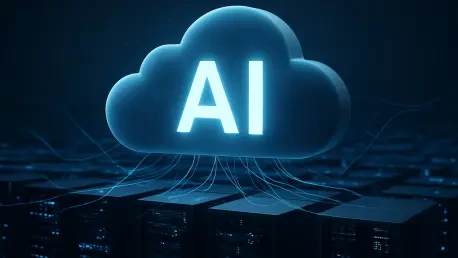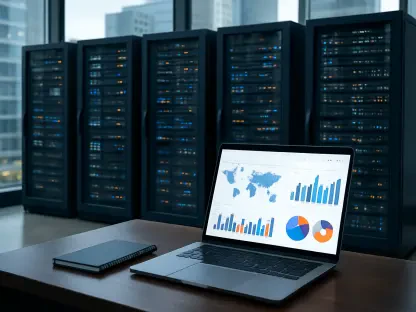The increasing reliance on artificial intelligence (AI) is fundamentally reshaping data center infrastructure. Driven by the necessity for advanced technologies capable of processing massive computational loads, this transformation goes beyond simple technological upgrades. It significantly impacts supply chain strategies, demanding increased capacity and flexibility to adapt swiftly to rapidly evolving demands. The shift to more powerful infrastructures not only changes data center architecture but also requires a strategic reevaluation of how supply chains operate within this new paradigm. The need for resilience and efficiency in supply chains becomes paramount as AI technologies evolve and proliferate.
Powering the Future with High-Density Racks
Transition to Higher Voltage Power Systems
As data centers evolve to support AI and high-performance computing (HPC) applications, the transition from conventional 48 V to more advanced power distribution systems is critical. Emerging technologies call for higher efficiency and increased power delivery capabilities, often involving a shift towards +/-400 V DC power distribution, promising more robust infrastructures. With the industry anticipating even higher voltage systems, such as 800 V HVDC, the design and implementation of power systems are seeing significant changes. This transition is essential to support high-density racks, particularly those designed to consume and manage unprecedented energy levels.
These high-density racks, including the anticipated 1 MW setups, require exceptional power delivery solutions that ensure stability and efficiency. The power demands necessitate an overhaul of existing frameworks and may involve the direct implementation of liquid cooling systems to manage the heat generated effectively. By transitioning to these advanced systems, data centers can meet the demands of upcoming AI workloads. The shift also reflects a broader trend in enhancing power efficiency, crucial for managing energy consumption effectively and sustainably within expanded operations.
Innovation in Cooling Technologies
The elevated energy demands of AI workloads create significant heat management challenges. Traditional air cooling methods no longer suffice for the advanced computational environments, leading to a pivot towards liquid cooling technologies. These methods, particularly direct-to-chip cooling systems, are designed for maximum thermal management efficacy. By directly addressing heat output from chips, liquid cooling solutions promise enhanced performance and reduced energy waste. Such technologies are progressively replacing traditional cooling systems as they become more prevalent and cost-effective.
As liquid cooling solutions gain traction, the implications extend to operational protocols, procurement strategies, and supplier relationships. Cooling technology advancements necessitate new partnerships with specialized suppliers and bring changes in logistics and operation management. Optimizing the integration of liquid cooling technologies into data centers requires careful and strategic planning, ensuring resilience and operational excellence. These changes herald a significant pivot from traditional cooling methods, indicating a profound shift in how heat management is approached in modern data center environments.
Supply Chain Resilience and Adaptation
Evolving Supply Chains with Centralization
The development of centralized systems in AI/HPC centers changes the risk distribution model within data centers. Centralized systems bring distinct challenges compared to traditional decentralized setups, where risks are dispersed across multiple, less interdependent systems. As a result, supply chains supporting centralized infrastructures must become more resilient and adaptable. A single supplier’s significant influence across many applications increases vulnerability, especially if it encounters disruptions. To counteract this, companies are focusing on diversifying their supply chains, minimizing lead times, and reducing dependency on singular vendors.
Additionally, as competition grows with the influx of new players, compatibility issues arise, demanding more standardization to streamline operations. With large-scale equipment often necessitating new shipping logistics and larger storage capabilities, companies must also focus on developing flexible logistics to match evolving needs. Navigating these complexities effectively ensures continuity of service, mitigates risks, and aligns supply chain capabilities with the evolving demands of modern data centers.
Site Selection and Logistics Challenges
The introduction of high-density 1 MW racks presents new challenges in selecting suitable sites for data center construction. These requirements often necessitate a deviation from traditional locations near urban centers due to the significant strain on local grids. Insights into remote or underdeveloped areas are emerging, driven by the quest for sustainable energy sources such as wind farms or natural gas deposits. However, these locations introduce logistical hurdles, including underdeveloped transport routes and inadequate infrastructure, posing challenges in shipping, storage, and maintenance.
As companies explore these new territories, they must adopt innovative strategies to manage logistical constraints while ensuring uninterrupted service delivery. Establishing reliable transportation and storage networks becomes essential, where proximity to renewable resources is important for sustainable operations. The rethinking of site selection is part of a broader shift towards more sustainable and strategically positioned data centers. By aligning site selection and logistics with evolving technological demands, companies can secure competitive advantages and ensure operational effectiveness.
Balancing Innovation and Sustainability
Artificial intelligence (AI) is dramatically transforming data center infrastructure as it becomes progressively integral. This paradigm shift is not merely about updating technology; it demands a comprehensive overhaul of infrastructural capabilities to handle substantial computational demands. As AI systems grow more sophisticated, they exert a profound influence on supply chain strategies, necessitating higher capacity and enhanced flexibility to swiftly accommodate emerging and evolving requirements. This transition to robust infrastructures significantly alters data center design and architecture, warranting a strategic reassessment of supply chain operations within this emergent framework. The critical need for supply chains to exhibit resilience and efficiency escalates as AI technologies continue to advance and multiply. Therefore, optimizing these chains becomes essential in meeting the demands imposed by cutting-edge AI technologies, ensuring that the infrastructure supporting these innovations can sustain the dynamic and demanding nature of modern technological landscapes.









